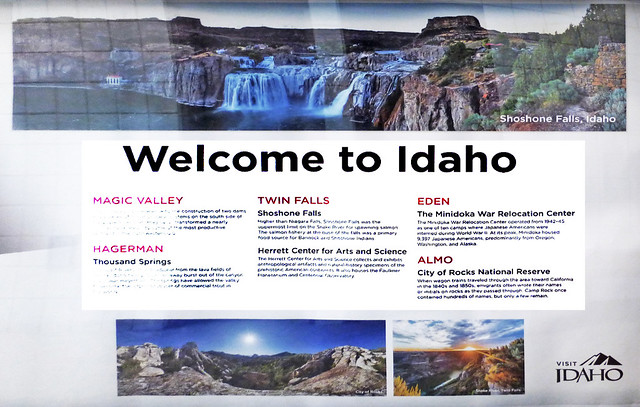Bozeman, Montana, was an interim destination on our way to Boise.
Linda had become acquainted with a distant cousin via her genealogical
research and, of course, it was a chance for me to visit the American Computer
Museum again.
While Linda and her cousin compared notes and family photos looking for more
clues, I headed over to the museum.

The American Computer Museum is currently in reduced size quarters near the
Montana State campus. This means that their Burroughs 205 Datatron is
stored in an inaccessible corner of their warehouse along with a couple of
other mainframes, so I couldn't update the poor quality pictures that I took
back in 2006.
But, I was able to capture a few new pictures. The ACM has expanded its
name to become the
American Computer & Robotics Museum. They have added a robotics exhibit and include a large area dedicated
to cryptography as well.
But, without the Burroughs 205, I focused my attention and camera on the
Consolidated Engineering Company's analog CEC-103 which was designed by Cliff
Berry of
Atanasoff-Berry-Computer
fame.



If you have ever wondered just what is inside that box, and how it operates,
you need go no farther than United States Patent # 2,446,191 belonging to JC
Pemberton. JC (That is his name, not initials) oversaw the construction
of the CEC 30-103 and was also a contributor to the ABC back at Iowa State, in his student
days.



The ACRM robotics room has an interesting collection of both practical and
Hollywood robots.


The microcomputer/personal computer exhibit has quite a variety of machines
including the Altai, as well as its debut photo on Popular Electronics. Note
the autographs on the cover from the authors of Basic!



A cryptography exhibit features some material from NCR's very secret
code-breaking work in Dayton Ohio.

And, yes there is even another NCR cash register on the premises.

This museum is a must-see stop for any computer person passing nearby.
Owner Barbara Keremedjiev and curator Elanor Barker are a delight to talk
with.
Update - April, 2022:
I truly understated the significance of ACRM's Cryptography exhibit. The museum has a German Enigma machine utilized by the Germans during World War II to encode tactical messages for their armed forces. Breaking the code of the Enigma and of the higher level German "Ultra" teletype coded machines both led to computer development after the war in England and the U.S.
So secret were these code-breaking activities that they remained largely hidden for thirty years, and perhaps some portions even into today. Highly recommended reading are two books: The Secret in Building 26 for the story of the American contribution at NCR in Dayton, Ohio. Colossus: Bletchley Park's Greatest Secret for the British contribution.




The ACRM does an excellent job of telling the story of these efforts and it is well worth an extra hour, regardless of what else may have attracted you to the museum initially.























































